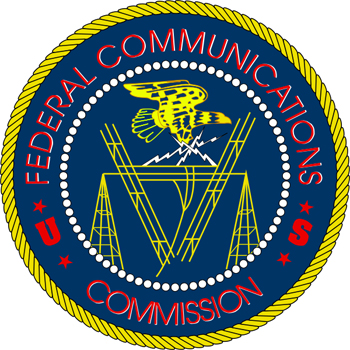FCC Frees Wireless Microphones From Spectrum Auctions
A new report and order protects mics and other wireless devices used by production professionals and others from interference.
After years of lobbying and cries of the possible scenarios that users of wireless microphones might not have enough spectrum after the government finishes its frequency auctions to do their job, the Federal Communications Commission has adopted new rules that expand wireless microphone license eligibility to include professional sound companies and venues that routinely use 50 or more wireless microphones.

The FCC plans to initiate a proceeding to explore ways to help accommodate the longer-term needs of wireless microphone users through use of additional frequency bands. "We conclude that this measured approach strikes an appropriate balance in providing the benefits of a license for entities and events that have a demonstrated need, while ensuring that spectrum is shared effectively with existing LPAS operations and remains available for other uses, including TV white space (TVWS) devices," a newly released Second Report & Order states. "The actions we take in this Second Report and Order to expand license eligibility and protection are only one step to address a range of issues concerning the operation of wireless microphones."
The move ensures that concert venues, theaters, convention centers, theme parks, professional sound companies, and other large-scale users will continue to be able to use their wireless mics without fear of interference.
The DTV Audio Group along with member equipment manufacturers like Niles, Illinois-based microphone supplier Shure have heretofore taken the fight against the spectrum grab directly to the FCC in Washington DC and obviously welcomed the new ruling.
"Shure applauds the FCC's thoughtful decision regarding expansion of entities eligible for wireless microphone licenses," said Mark Brunner, Senior Director, Global Brand Management at Shure, in a statement. "As spectrum demand is increasing from a wide variety of technologies and services, protection of professional audio operations is becoming more critical."
Brunner said his company is pleased that the Commission has recognized the wide impact that wireless microphones have on the daily production of broadcasters and video production companies (not to mention sports leagues, live entertainment, as well as corporate, civic, education, and houses of worship venues).
Get the TV Tech Newsletter
The professional video industry's #1 source for news, trends and product and tech information. Sign up below.
"This action takes an important step forward in updating the regulations regarding professional audio operations that have become an integral part of American culture and aligns with views held by regulatory authorities around the world," Brunner said. "Shure appreciates the careful attention the FCC has paid to this issue."
After considering technical and regulatory factors, the Commission concluded in a newly released Second Report and Order that the use of wireless microphones (and related equipment such as in-ear monitors and production intercoms) at major productions and events could be effectively protected by expanding license eligibility.
The Report & Order also states that wireless microphone users may request protection from interference from unlicensed devices operating in the "white space" between TV bands at the time and location of these events by registering in one of the FCC-approved TV Bands Devices Databases. This will enable licensed users to obtain protection in a more streamlined and efficient manner. Previously, only broadcasters, cable networks, and TV/film production companies were eligible for licenses.
The FCC R&O also states, "In the Incentive Auction Report and Order adopted concurrently with this Second Report and Order, we adopt several measures to accommodate the needs of wireless microphone users in the portion of the UHF band that will remain available for their operations following the incentive auction. Among other actions, we revise our rules for co-channel operations to expand areas where wireless microphones may be used in the bands that will remain allocated for broadcast services,and we will permit wireless microphones to operate in the 600 MHz guard bands spectrum.
"Although we will no longer designate two TV channels exclusively for wireless microphone use after the UHF band is reorganized," it continues, "we intend to designate one channel for use by wireless microphones and unlicensed devices and plan to make improvements in the TV bands database to enable more timely and effective registration of wireless microphone users seeking interference protection from TVWS device operations.
"In addition, while wireless microphones will eventually be required to cease operating in the spectrum repurposed for wireless broadband, we will allow wireless microphone users to continue to operate for 39 months following the incentive auction in order to facilitate their transition to other spectrum.
"Finally, recognizing the important benefits provided by wireless microphones, we plan to initiate a proceeding in the near term to explore ways to help accommodate the longer-term needs of wireless microphone users through use of additional frequency bands to meet their varying needs."
